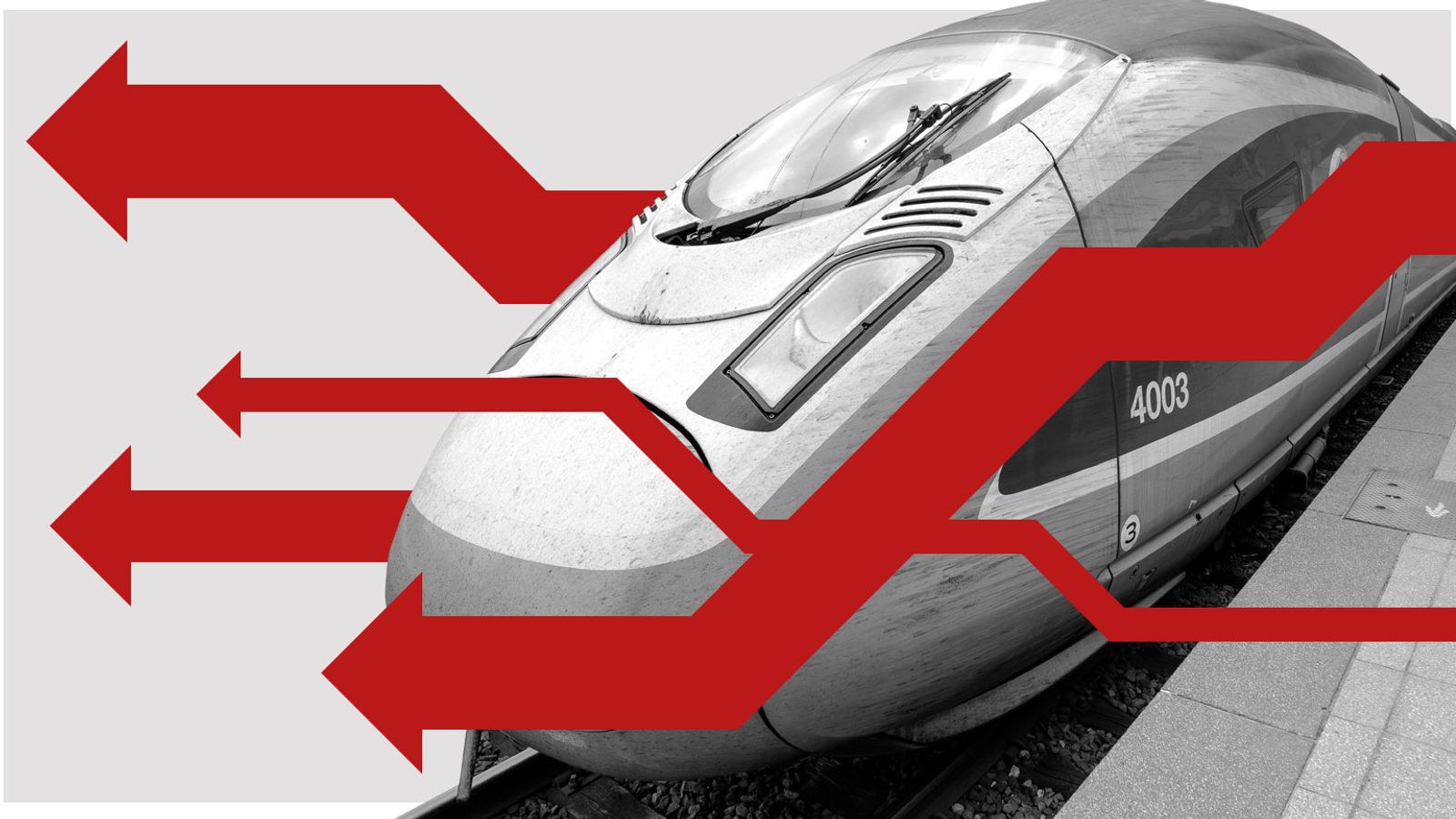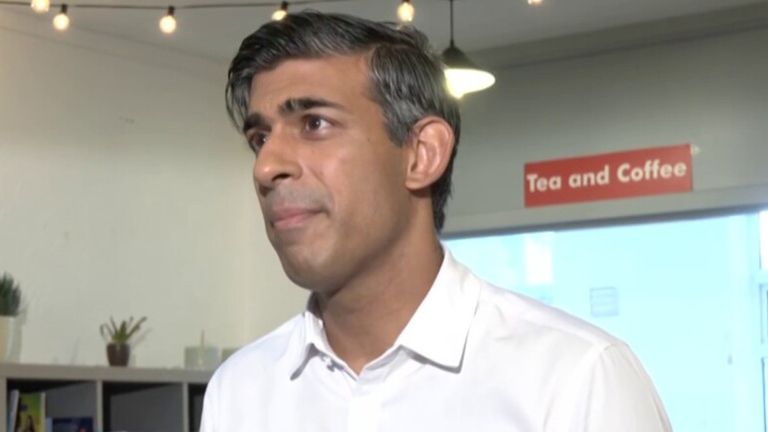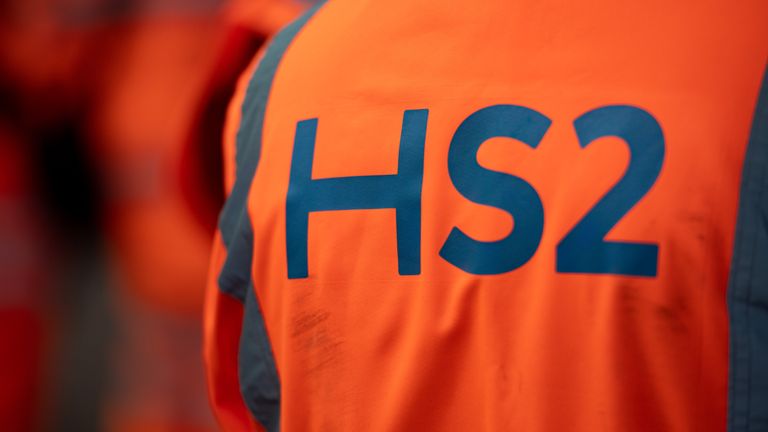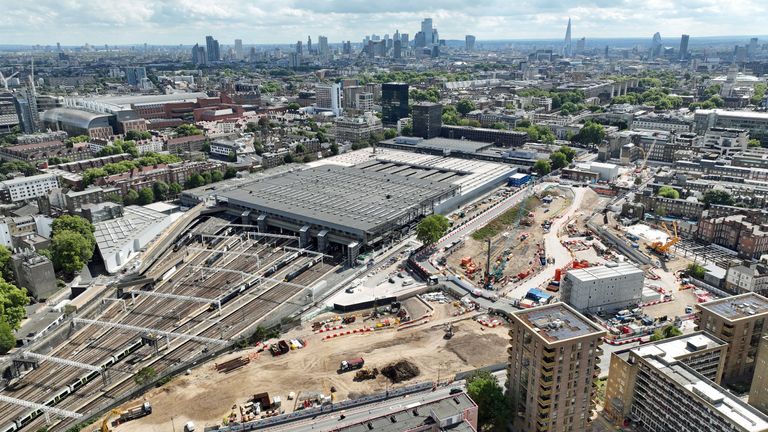HS2 is the UK’s biggest infrastructure project, supposed to transform public transport between London, the Midlands and the North.
But it is becoming synonymous with political football, disappointment, delays and spiralling costs.
It’s been backed by more than one government and political party over the years but Prime Minister Rishi Sunak has declined to throw his support behind the full project, resulting in fears the Manchester part of the line could be scrapped.
It’s the latest setback after the March announcement that parts of the line will be delayed, prompting questions of whether the UK is capable of delivering large infrastructure projects.
Interventions from five regional Labour mayors and numerous northern businesses have done their best to retain the current plans.
What is HS2?
HS2 is 330 miles of planned high-speed rail network, initially intended to link London and the West Midlands, stretching to Birmingham, with a further phase extending to Crewe, Manchester and Leeds in the North. Cost concerns in 2021 led to the shelving of the Leeds stretch.
It was first mooted by the Labour government in 2009.
The project has been beset by delays and rising costs, with some estimates now putting the price tag at more than £180bn, a figure that’s continuously risen from the 2019 estimate. In 2019 costs were put at around £100bn.
How much was it supposed to cost?
The original bill – at 2009 prices – was supposed to be £37.5bn.
At the time of the 2010 election, estimates of the cost of HS2 ranged upwards of £20bn.
By January 2012, when the broad route of the proposed scheme was in place, this had risen to £32.6bn.
In June 2013, the coalition government increased the overall cost to £42.6bn and in November 2015, when the figures were updated, in line with inflation, to £55.7bn.
The Department for Transport’s latest estimate in 2021 had spiralled even higher, to between £72bn and £98bn.
But Lord Berkeley, former deputy chairman of the government’s independent review into the project, said it could climb to £107bn.
It could be the 2040s before passenger services are operating on the full network.
Read more
Ex-minister calls for inquiry into HS2
Rosebank won’t make big difference to economy – but the politics are significant
New stations and 18 trains an hour
HS2’s inception follows the development of HS1, the high-speed line between London and Kent connecting the UK to routes on the European continent.
The aim is to run 18 trains an hour in each direction to and from London – at speeds of up to 224mph – compared to between two and six an hour on Europe’s high-speed railways.
It involves the construction of more than 300 bridges and 70 viaducts for the London-West Midlands phase alone.
There will also, under current plans, be new stations – including Birmingham Curzon Street and extensions for London Euston and Manchester Piccadilly.
The project is designed to meet the long-term growth in demand for rail services, improve the reliability of the network, boost connectivity by making journeys faster and easier, and help economic growth across the UK.
What is the route?
Stations on the first phase of the line will be London Euston, Old Oak Common in west London, Birmingham interchange and Birmingham Curzon Street. There are, however, concerns the London Euston station terminus will be axed as it’s been put on pause due to spiralling costs.
The line will instead end in Old Oak Common, requiring passengers to get the Elizabeth Line to central London.
This means it could be more than a decade before high-speed services stop at Euston, with passengers expected instead to travel for half an hour on the Elizabeth Line.
The second phase will see trains head northwest to Manchester Airport and Manchester Piccadilly, or use existing lines via Wigan, Crewe and Stafford.
The route had also been planned to go northeast from Birmingham towards the East Midlands Hub at Toton.
From there, before the eastern extension was cancelled, the trains were due to continue on the HS2 line to Leeds, with others diverging onto existing lines via Chesterfield and York.
Delays to the Crewe-northwest section were also placed for two years.
Where did it all begin?
In 2009, under Labour transport secretary Geoff Hoon, the government set up a company, HS2 Ltd, to look at proposals for a new high-speed line.
The following year, the Department for Transport (DfT) set out plans for a Y-shaped network connecting London and the cities in the North.
Later, under the Conservative-Liberal Democrat coalition, it was confirmed that the line would be built in two phases.
Phase 1 would run from London to the West Midlands, beginning in 2026. That’s been pushed back to between 2029 and 2033. Euston Station is not due to open until 2035.
Phase 2, extending from the West Midlands to cities in the North, would start in 2032-33. But that’s been moved to any time from 2034 and 2041.
Why is HS2 so behind schedule?
By July 2019, the government accepted that the timetable was no longer feasible and has continued to change opening times.
Reasons for the delay included a year spent revising cost and schedule estimates for phase 1 and more time being needed for construction at various sites.
In August 2019, the government announced an independent review of the programme to advise on whether to proceed.
And in March of this year the government announced more construction would be delayed by two years to save money.
The COVID-19 pandemic probably didn’t help with progress, either.
In a written ministerial statement earlier this year, Transport Secretary Mark Harper said the government is “prioritising HS2’s initial services” between Old Oak Common in west London and Birmingham Curzon Street.
Why have the costs risen so much?
In one word: inflation.
Mr Harper already said earlier this year, “we have seen significant inflationary pressure and increased project costs, and so we will rephase construction by two years, with an aim to deliver high-speed services to Crewe and the North West as soon as possible after accounting for the delay in construction”.
A report in January 2020 by the National Audit Office (NAO) – the spending watchdog – said HS2 Ltd had not accounted for the level of uncertainty and risk in the plans.
It used a method for calculating how much extra might be needed “that was not appropriate for a programme at such an early stage of development”.
Among the factors causing higher costs were commitments to increase the length of tunnelling and to erect noise barriers.
The NAO said the government and HS2 Ltd had “not adequately managed risks to taxpayer money”.
More money was needed for building bridges, tunnels and stations than first thought.
Complex issues involving the discovery of asbestos and archaeological remains, and the need to divert more gas and power lines than expected, have caused problems too.
More money was also needed to buy properties to make way for the rail line.
Even after these have been accounted for, there is uncertainty around the cost of extending London’s Euston station to accommodate the high-speed trains.






